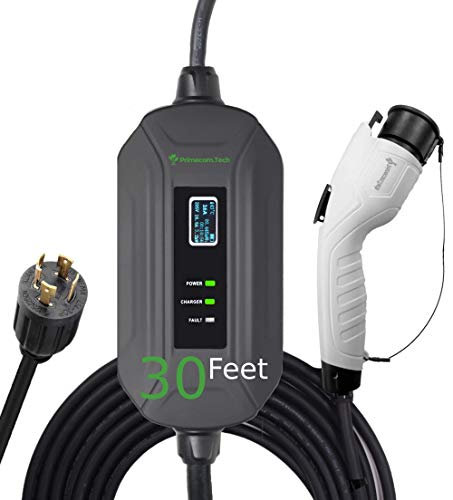You are using an out of date browser. It may not display this or other websites correctly.
You should upgrade or use an alternative browser.
You should upgrade or use an alternative browser.
V2L setup
- Thread starter Tomarch
- Start date

Help Support BMW i3 Forum:
This site may earn a commission from merchant affiliate
links, including eBay, Amazon, and others.
You could do this as long as your 120 V loads don't exceed the i3 DC-DC converter's maximum output which some have written is 2.5 kW. As a former 2012 i-MiEV owner, I'd be surprised if its DC-DC converter has a higher maximum output. Unfortunately, the HV overhead of leaving an i3 in drive ready state would reduce the efficiency of this 120 V power production significantly. You should turn off the daylight driving lights, climate control system, etc., to reduce the power consumption. You'd probably notice the battery pack's charge level decreasing faster than might be expected for a 2.5 kW load.Anyone on the forum using their i3 for backup power for the home? I did it with my 2012 I-miev via inverter from the 12v battery with car in ready mode, back feeding our home's main panel. Can I do this with the i3?
I've never tried this but other i3 owners have. Hopefully, they'll provide their feedback.
And also, bear in mind that the DC-DC converter probably isn't designed to run at 100% capacity all the time - components like that usually are not.
It probably makes sense to keep your max load well below its full capacity, or simply run a petrol generator if you need more. The cost of replacing the main power module in an i3 will completely dwarf the cost of a good quality petrol generator and quite a lot of fuel.
It probably makes sense to keep your max load well below its full capacity, or simply run a petrol generator if you need more. The cost of replacing the main power module in an i3 will completely dwarf the cost of a good quality petrol generator and quite a lot of fuel.
All interesting stuff, and thanks to both of you. Is the main power module the same as the DC/DC converter (what I would call the onboard charger)? The step up from the I-miev was largely for range, but for a variety of reasons, including the ability to backup my home during outages. I will not have a gas generator - period. Maybe I have to keep the Mitsubishi just for that purpose. That would be a real disappointment.
In U.S. i3's, there are two 3.7 kW onboard chargers that are used when AC charging. These are involved in converting 120 - 240 VAC input to HV DC output during AC Level 1 or 2 charging. These onboard chargers wouldn't be involved in powering a home during power outages.All interesting stuff, and thanks to both of you. Is the main power module the same as the DC/DC converter (what I would call the onboard charger)?
The DC-DC converter is a different module that converts HV DC power to 12 VDC power. The DC-DC converter would be involved in powering a home during power outages via an external inverter.
In U.S. i3's, there are two 3.7 kW onboard chargers that are used when AC charging. These are involved in converting 120 - 240 VAC input to HV DC output during AC Level 1 or 2 charging. These onboard chargers wouldn't be involved in powering a home during power outages.
The DC-DC converter is a different module that converts HV DC power to 12 VDC power. The DC-DC converter would be involved in powering a home during power outages via an external inverter.

$94.47
$100.00
BMW 51472450511 All-Weather Floor Mats for G01 X3 (Set of 2 Front Mats)
Irvine Eurocars

$59.99
$79.99
WORKPRO 12V Cordless Drill Driver and Home Tool Kit, Hand Tool Set for DIY, Home Maintenance, 14-inch Storage Bag Included
GreatStar Tools

$42.99
$49.99
Hi-Spec Tools 67pc SAE Auto Mechanics Hand Tool Kit Set. Complete Car, Motorcycle, Engine & Garage Repairs with Sockets, Ratchet Wrench, Pliers & More
Hi-Spec Products, Inc.

$49.99
$69.99
Horsepower Scrubber, Waterproof, Electric Power, Spins 350 RPM, 5 Brush Heads, AS-SEEN-ON-TV, Cleans Dirt & Grime, Tile, Grout, Bathrooms, Kitchen, Auto Rims, Outdoor Furniture & More, Rechargeable
BulbHead The Home Of Bright Ideas
Similar threads
- Replies
- 2
- Views
- 719
- Replies
- 1
- Views
- 1K
- Replies
- 6
- Views
- 452
































![300W Car Power Inverter DC12V to AC110V,Dc to AC Car Plug Adapter Outlet with Multi USB[24W USB-C] /USB-Fast Charger(24W) Car Inverter,Car Charger for Laptop Vehicles Road Trip PiSFAU](https://m.media-amazon.com/images/I/41-KedJShYL._SL500_.jpg)









